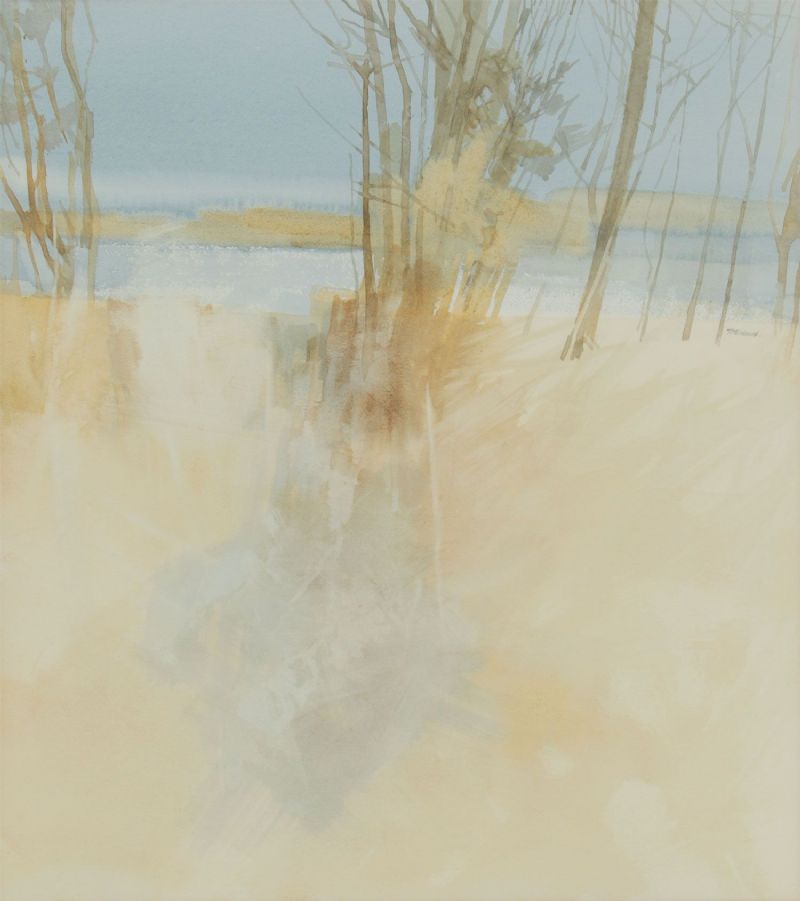March Art Auction Lot 7 – Terence P. Flanagan, Lough Coole
Terence P. Flanagan was born in Enniskillen in 1929. He attended night classes at Enniskillen Technical College, first leaning watercolour painting from Kathleen Bridle, with another of her student’s being William Scott. Flanagan attended Belfast College of Art from 1949 to 1953, where he would teach until his retirement in 1984. He was president of the Royal Ulster Academy between 1977 to 1983, along with being a member of the Royal Hibernian Academy. Described by Seamus Heaney, ‘as an artist, [Flanagan] has gone his own way, explored the Irish landscape and enhanced Irish landscape painting through the discovery and elaboration of an individual style, one that we now take so much for granted that we tend to forget that it had to be invented.’
Drawing on a rich cultural history inspired by the Irish landscape, Flanagan incorporated a literary sentiment of romanticism when capturing nature. He had previously written poetry, with this understanding of lyricism and metaphor later absorbed into his paintings. The landscape became a force for painterly exploration, as Flanagan subverted traditional realism for an expressionist style. His ability to excavate and rework the landscape into gestural compositions was described in Heaney’s poem, Bogland, dedicated to Flanagan.
While still depicting figurative elements, there remains a play of abstraction in Flanagan’s representation of land, sea, and sky. The expressionism of his loose painterly style mimics tension with the landscape itself, a clashing of points of contact between the horizontal and vertical. Akin to the romantic style of J. M. W. Turner, Flanagan mimics a similar sense of vitality and movement within nature, reflective of the atmosphere.
By producing close studies and consecutive drawings before beginning to paint, Flanagan developed a familiarisation with his subject. This intimate understanding allowed for his distinctive style, reducing the landscape to forms of shadow and light. By repeatedly returning to scenes of Fermanagh and Donegal, Flanagan’s sensitivity to the landscape was present in his ability to alter subtle modulations in tone or technique to capture the specific atmosphere of the scene before him. On using watercolour, Flanagan said tones 'can be achieved of such subtlety as to appear merely glimpsed, and, alternatively, so also can saturations of a rich depth and luminosity.’
This painting exemplifies the loose, gestural brushstrokes and soft tones which came to define Flanagan’s aesthetic; a work of careful study revealing his rich understanding of the Irish landscape.

